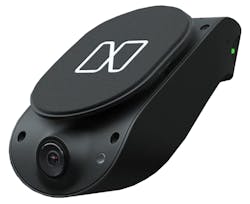Opinion: Crash data defies logic of speed-limiter mandate
With the Federal Motor Carrier Safety Administration (FMCSA) moving forward to establish a rule to govern heavy-duty truck speeds, safety in commercial transportation again is in the spotlight. If finalized, the rule would require commercial vehicles in excess of 26,000 lb. gross vehicle weight rating (GVWR) to set a top speed—at this point undetermined—via their electronic engine control units (ECUs).
“Our goal is to prevent crashes and preserve the quality of life for all roadway users across America,” FMCSA Executive Director and Chief Safety Officer Jack Van Steenburg said. “Zero is our goal.”
The comment period began on May 4 and input will be accepted into the Federal Register until June 3. More than 5,000 stakeholders had logged their concerns with the proposed speed-limiter rule in the first five days of the comment period.
So far, finding a comment in favor of the proposed rule is about as rare as pulling up to a diesel pump charging less than $5 per gallon, with many concerned that governing tractor-trailer speeds will lead to more accidents and roadways that are even more congested.
One commenter said:
If trucks can only run 60-65 mph, it will severely limit our abilities to merge with traffic, as well as avoid hazards and collisions with other vehicles. Many times, I have had to speed up and move to the left lane to avoid another vehicle attempting to merge into my lane of traffic. Yes, you could slow down and let them over. But with a large truck, that isn’t always the best course of action. Having to slow down suddenly could lead to a collision if the drivers behind us aren’t paying attention. Also, we will not be able to get a run for the hills, and it will slow us down even more climbing the hills.
This trucker and many others have valid concerns. The concerning issue of vehicular deaths, however, does need to be addressed as a matter of public safety. But is this an earnest attempt to save lives or a government overreach?
This question matters as fleets and owner-operators will be forced to program each truck's ECU and monitor them to ensure compliance with the speed-limiter rule. Various regional speed limits could be set up, but that would likely cause some confusion in the shop among technicians charged with configuring the ECUs.
Government data reveals that any present anxiety—and future benefits—surrounding the speed-limiter conversation might not even be worth having, if the goal is to make a serious reduction in traffic deaths.
Trucking-related fatalities by the numbers
The National Highway Traffic Safety Administration (NHTSA) reported motor vehicle accidents led to 31,720 fatalities from January through September 2021, a 12% increase over 2020 and the highest for that period since 2006. Regarding deaths related to trucking, a 2019 NHTSA report found more than 5,000 people were killed in large-truck crashes (GVWR over 10,000 lb.). The injury rate was 118,000 for large-truck crashes that same year. That's clearly not a small problem, and some intervention should be done by someone, right?
The problem is limiting truck speeds likely would not make much of a dent in those numbers, let alone get to FMCSA’s goal of zero. According to a University of Michigan Transportation Research Institute (UMTRI) study from 2007, passenger car drivers initiated 70% of fatal crashes involving trucks versus 16% for the trucker. In 10% of cases, both were culpable.
A similar study—from the AAA Foundation for Traffic Safety (and prepared by the UMTRI) using Fatality Analysis Reporting System (FARS) data from 1995 to 1998—found roughly the same causation rate. “Driver factors were coded for 80% of the involved car drivers but for only 27% of the involved truck drivers in car-truck crashes, with passenger cars causing the accident 80% of the time,” the study said.
Also, a speeding truck, or one going too fast for the conditions, was coded only 11% of the time. That means at most, speeding trucks would be responsible for 500 deaths per year, and on average more than 36,000 for all other reasons. But it would not be 500, because that 11% includes medium-duty as well as heavy-duty trucks. And a truck could still be under the speed-limiter threshold and be considered going faster than the conditions would warrant.
This isn't a logical solution. The costs would divert resources to program and monitor these speed-limiter devices, while possibly creating drastic disruptions to traffic patterns across the country and further straining the supply chain. The payoff would be about a 1% drop in the annual national traffic death tally.
These studies are old, even pre-dating smartphones, which arguably cause more accidents than speeding. So perhaps that number of speeding truck related-deaths is higher now. But that is unlikely, as many large fleets already govern their trucks to 65 mph or less. One other interesting note: NHTSA reported 5,211 people were killed in crashes involving a large truck in 2000 and 5,033 in 2019. Deaths were under 4,000 until 2015. Despite FMCSA’s mandating of electronic logging devices to make roads safer in 2016, the death toll has not dipped below 4,500 since then.
Anecdotally, truckers have been saying ELD mandates have created a more dangerous situation, as some truckers speed up to make up for lost time when they had to take a federally mandated break. A study from the Supply Chain Management Research Center at the University of Arkansas found this may actually be the case.
“Surprisingly, the number of accidents for the most-affected carriers—those operators for whom the federal mandate was intended—did not decrease,” noted Andrew Balthrop, one of the authors. “In fact, following the implementation of the mandate, accidents among small carriers and independent owner-operators increased, relative to large asset-based carriers.”
The study, which used FMCSA data before the mandates and then during the initial and strict enforcement periods, showed owner-operators were involved in 11.6% more accidents. And accidents among small fleets (up to 20 commercial vehicles) increased by 9%. Large fleets were unaffected, as they had used ELDs prior to enforcement and also govern speeds.
“Drivers have reacted in ways the FMCSA has not fully anticipated, and these behaviors should be accounted for as the FMCSA revisits their hours-of-service policies,” Balthrop advised.
A more intelligent approach
The last major federal trucking rule is the reason more drivers are speeding, so a new rule to prevent them from speeding must be created? It should go without saying that the nursery rhyme where the old lady swallowed a fly is meant as a cautionary tale—not a policy strategy.
Instead of compounding safety issues with more regulations, an alternative suggestion could be to seek the help of artificial intelligence instead of bureaucrats. Specifically, using AI-assisted video cameras, both inward and outward facing, has shown to be highly effective at preventing—or at least mitigating—the severity of crashes. The inward cameras can monitor driver behavior and intervene through sound alerts when a driver starts to nod off. Outward-facing cameras can predict collisions by scanning for threats. These can be used with or without ADAS such as emergency braking.
Nauto reported that its solution helped one large fleet reduce collisions by 40% over the holiday season. The solution’s AI constantly learns and improves, using insights gleaned from 1 billion miles of driver data per year.
“We're getting fleets to generally about 60% to 70% fewer federal reportable incidents than they began with,” Heck added.
As drivers may feel just as uneasy with a camera watching them all the time as they would having an ECU controlling their speed, Nauto can work effectively even without the video being recorded.
“The drivers are still getting the safety benefit, so [the Nauto solution] will still wake the driver up,” Heck said. “We've gotten 86% loss reduction in a fleet that has no interior video.”
Outward video always is recorded, as that data can be used to coach up drivers who make mistakes as well as exonerate good drivers who ran afoul of a bad driver. According to Heck, one fleet dodged two multimillion-dollar lawsuits where the video proved their drivers were not at fault.
“We see this huge disparity, where commercial fleets get blamed 80% of the time,” said Heck, who holds a doctorate in neural networks. “If it's a good fleet, they're at fault less than 20% of the time. You get accused a lot more than you're actually really at fault.”
Recent data from video telematics provider Lytx backs up the argument for AI. The company’s fourth-annual State of the Data report found its solution cut customer collisions by 25% and severe accidents by 17%.
Ten years ago, trusting more in machines than the government may have been the plot of a sci-fi movie, but now it seems like the safer choice.
“When the technology—especially the video technology—came out, it was hard [for drivers] to embrace, but obviously more embrace it now, with proven results,” offered Gary Johnson, Lytx’s director of safety services. “You have technology like ours that notifies them immediately if there is a behavior that was detected. There is self-coaching. This is where we’re seeing clients embrace this.”
Anything is better than inviting more government overreach.

